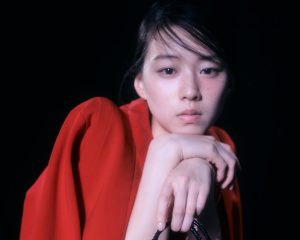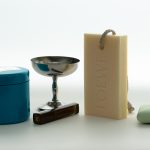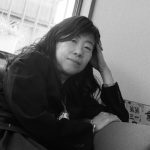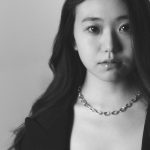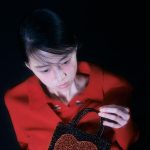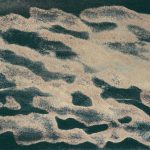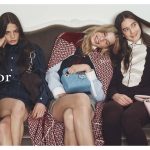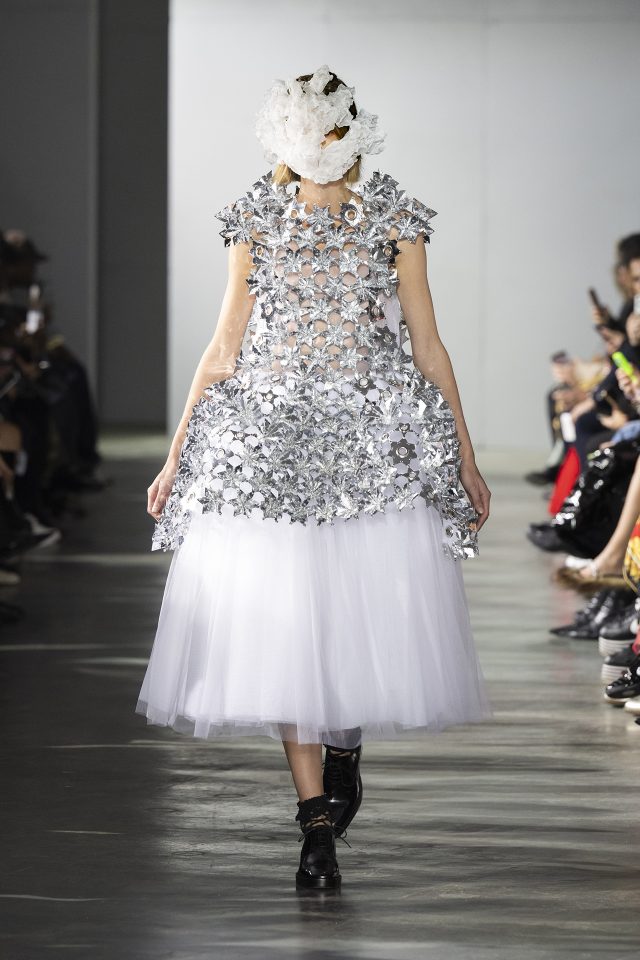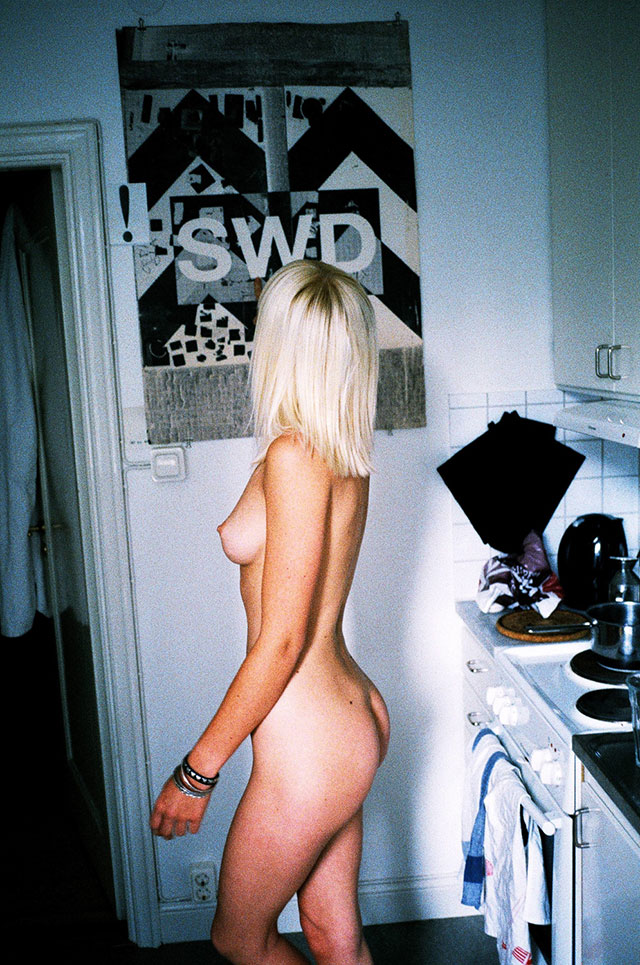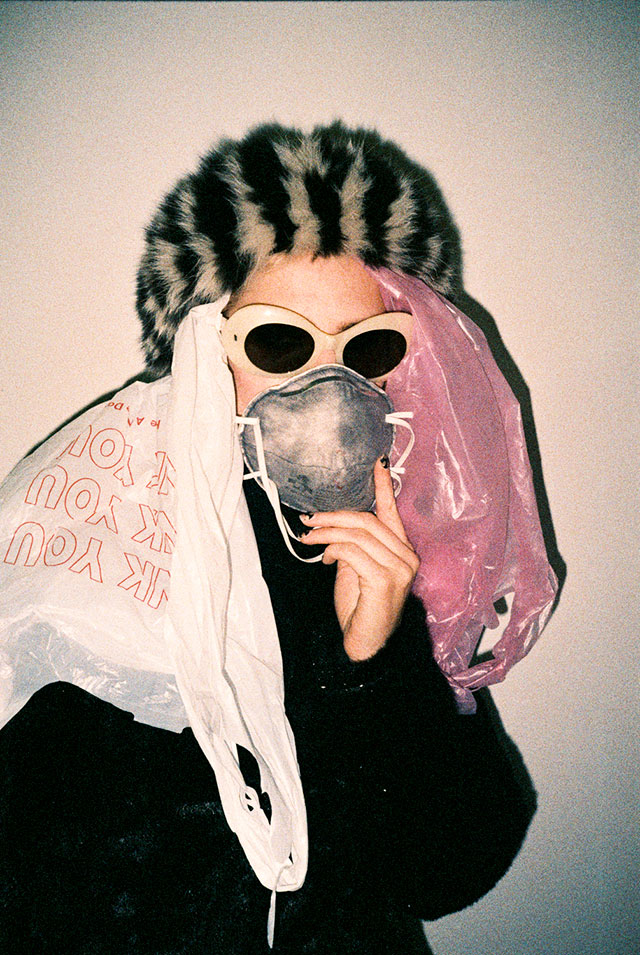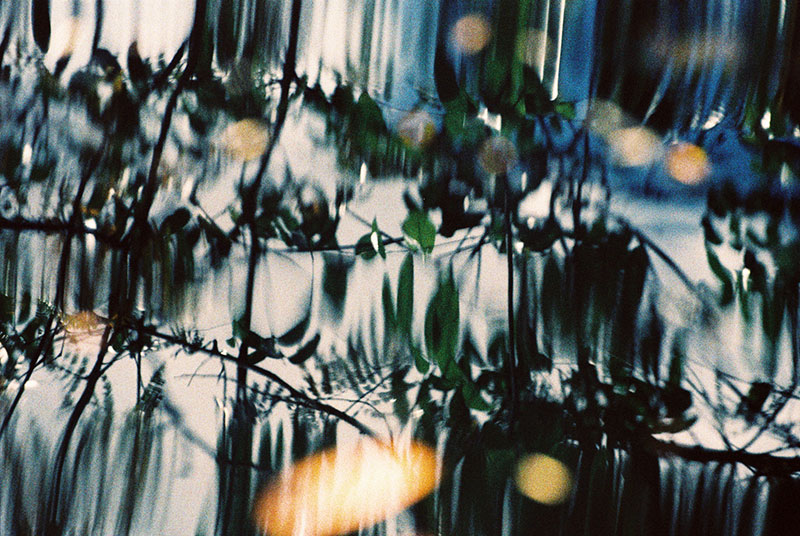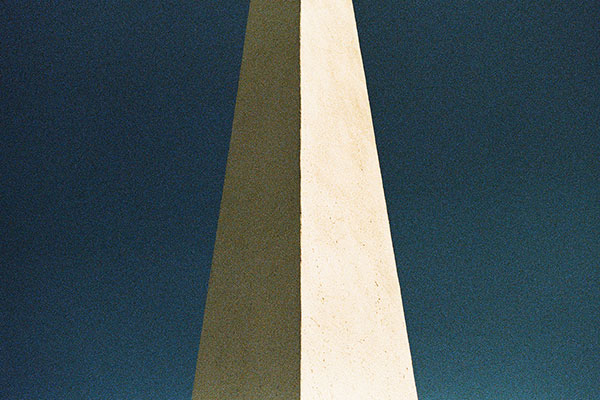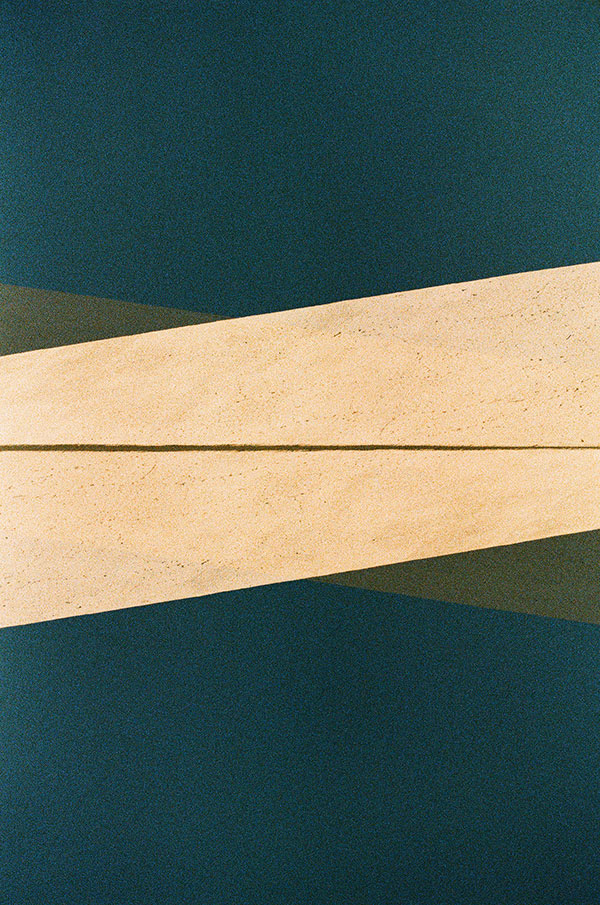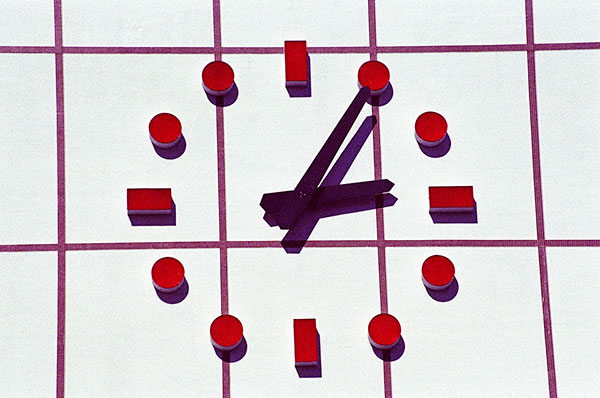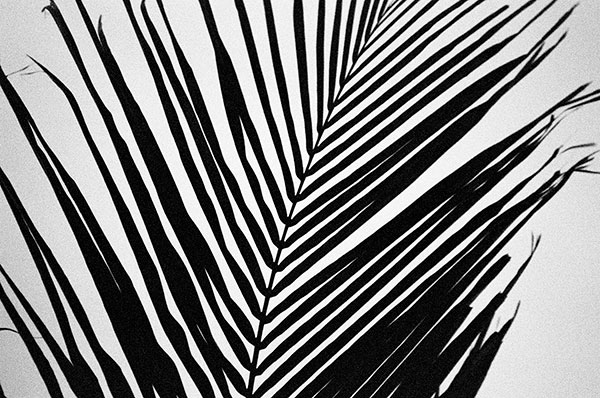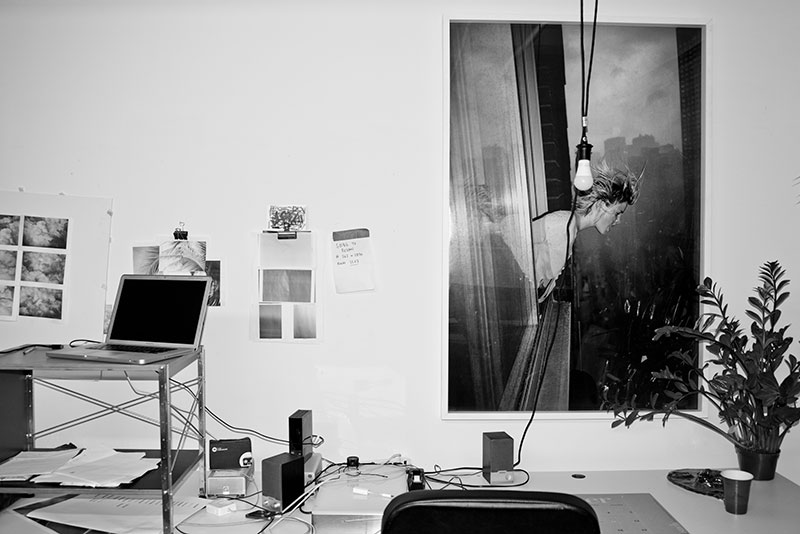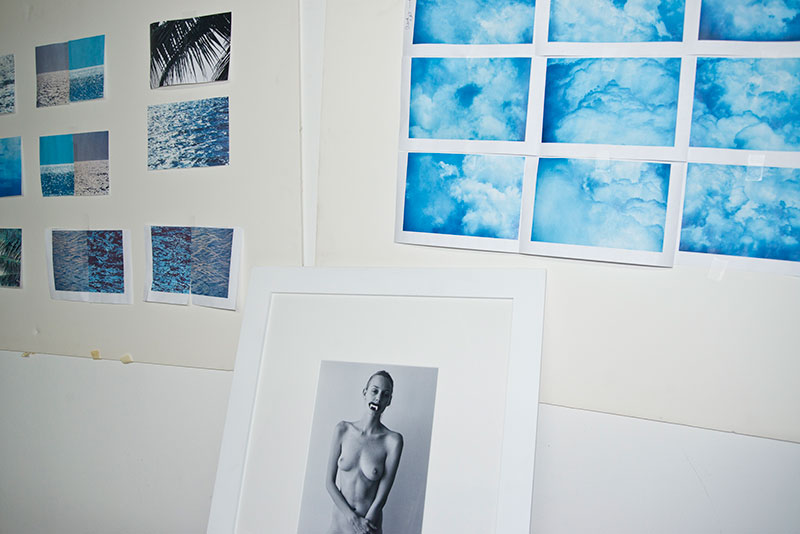写真家・Ruvan Wijesooriya (ルヴァン・ワイジーソーリア) インタビュー
Ruvan Wijesooriya
ドラマ「ゴシップ・ガール」への作品提供や、LCD Soundsystem のドキュメンタリー書籍などで、一躍注目を集めた写真家 Ruvan Wijesooriya。彼は、スケートボード会社の運営や音楽ジャーナリストなど、様々な業界を渡り歩いてきた異色のキャリアを持つ人物でもある。それだけに、写真の題材となるジャンルもファッションから音楽、自然、ポートレートまで幅広く、横断的な表現で多くの人々を魅了し続けている。彼の視点はいかにして養われ、それがどのように写真表現へと繋がっているのか。X-Contemporary Art Fair Miami Beach で展示を終えたばかりの Ruvan Wijesooriya に話を聞いた。
写真家・Ruvan Wijesooriya (ルヴァン・ワイジーソーリア) インタビュー
Portraits
(The original text in English follows afterwards)

‘Girl out the Window’ | Courtesy of Ruvan Wijesooriya
ドラマ「ゴシップ・ガール」への作品提供や、LCD Soundsystem のドキュメンタリー書籍などで、一躍注目を集めた写真家 Ruvan Wijesooriya (ルヴァン・ワイジーソーリア)。彼は、スケートボード会社の運営や音楽ジャーナリストなど、様々な業界を渡り歩いてきた異色のキャリアを持つ人物でもある。それだけに、写真の題材となるジャンルもファッションから音楽、自然、ポートレートまで幅広く、横断的な表現で多くの人々を魅了し続けている。彼の視点はいかにして養われ、それがどのように写真表現へと繋がっているのか。X-Contemporary Art Fair Miami Beach で展示を終えたばかりの Ruvan Wijesooriya に話を聞いた。

LCD Soundsystem ‘This Is Happening’ | Courtesy of Ruvan Wijesooriya
—まず、小さい頃のお話を聞かせていただけますか?
僕の両親は1980年に(アメリカから)フィリピンへ渡ったんだ。ちょうどそのぐらいの頃から記憶が残っていて、妹が自宅で生まれたことや、BMX バイクに乗ってクラッシュさせたことも覚えている。それと、初めて BMX で地面からジャンプしたことや、学校で「シット!」と言ってトラブルを起こしたこともね。その後、1984年にヨルダンへ引っ越し、あまりにも土地が広大だったから驚いたよ。だから両親は、僕と妹をアンマンの広場でよく走り回らせてくれた。

in Syria | Courtesy of Suchinta Wijesooriya
僕たちは焚き火を始めたり、ワイルドでクレイジーな子供っぽい振る舞いは全部やってきた。9歳の時にスケートボードに出会い、それから何年も続けていたよ。同時期に母親が考古学にはまりだして、シリアのあらゆる場所でキャンプ旅行をしたりね。パルミラには円形競技場があったけれど、近年の戦争でそのほとんどが破壊されてしまったと聞いた時には、僕と母は胸が張り裂けそうになったよ。

in Syria | Courtesy of Suchinta Wijesooriya
—そういった幼少期の経験は、現在の写真作品に反映されていると思いますか?
世界の見方や好奇心に影響していると思う。すぐに判断を下しがちな性格だけど、その判断を作品に影響させることはめったにないね。好奇心が旺盛だし、強烈な歴史の中で育ってきたことで、徐々にアート作品の価値を評価する眼を養ってこれたんじゃないかな。調和のとれた世界を見ていきたいから、僕の作品にはリアリティーや希望が反映されていると思うよ。
—スケートボード会社の運営や、スタイリストとの仕事、音楽ジャーナリストとしてのキャリアで培った視点は、今の活動にどのような影響を与えていますか?

Theo Crying at Boombox, London | Courtesy of Ruvan Wijesooriya
スケートボードをやっていた影響で、激しい音楽も聴くようになったね。スケートボードと音楽への関心は「システムなんてどうでもいい、やりたいことをやれ、都会のジャングルは巨大な遊びだ」っていうイデオロギーに基づいている。僕の場合は、これがカメラで表現する際のメンタリティーになっているね。スタイリストとの仕事は、飛行機で出会ったある人物との出会いから始まったんだ。その人は1999年に、僕に仕事を与えてくれたんだけど、イメージ・メイキングや洋服を通して表現すること、洋服からの提案でいかに状況を変化させ、情報を伝達していくのかについて、たくさん教えてくれてくれた。写真の世界でドキュメンタリー作家になるのはとても面白いよね。今取り組んでいることに関して言えば、スケートボードや音楽、ファッションには自由な感覚が膨大に存在する。今制作中の作品は、こうした自由な感覚に深く関わったもので、その感覚がどこから来ているのかを捕らえたものにしようと思っているよ。
—芸術表現は数多くありますが、その中から写真を選んだ理由は?
実際、写真が僕を見つけてくれたんだ。僕はもともとジャーナリストで、写真を撮りながら自分で記事を書いていた。でも周りの人たちが「書くよりも写真をやってみたらどうか」と言ってくれていたから、写真を本業にできるんじゃないかと思ったんだ。ひとつの主題に対して、テープレコーダーよりもカメラからの方が多く情報を得ている気がしていたしね。それに、写真は僕の好奇心を満たす口実にもなっているよ。
—写真制作を通して最も大切にしている哲学や、伝えたいメッセージはありますか?
哲学は特にないんだけど、写真を通じて貢献していければと思っているよ。
—「撮りたいという」という衝動に駆られる瞬間は、どんな時に訪れますか?
僕や他の誰かが「忘れたくない」と感じた瞬間や、無限の感覚を得た時かな。

‘Desert Flowers’ | Courtesy of Ruvan Wijesooriya
—自主制作では、被写体の選定をどのように行っていますか?
自分の好奇心から見つけてくる場合と、アプローチしてもらう場合のどちらかだね。色々な業界を渡り歩いてきたから、異なる目的でさまざまな場所を訪れたり、多種多様な人々と出会ってこれた。例えば、LCD Soundsystem が大好きで、7年間バンドと同じ時間の同じ場所にいるように努め、彼らの本を作ったんだ。

LCD Soundsystem at Coachella | Courtesy of Ruvan Wijesooriya
誰かがその本を見て、Samsung の初となるグローバル・ブランディング・キャンペーンの仕事を依頼してくれた。Samsung は当時、製品よりも写真にフォーカスすることに重点を置いていたからね。この仕事で色々な場所に行ったんだけど、そのうちのひとつがブラジルのアマゾン川。アマゾンでは、新しいアプローチで抽象性を追求し、そのアプローチが後の数ヶ月間に渡って、ファッション・ストーリーや自然写真、ポートレートといった作品に影響を及ぼしていたんだ。
さらに、そのアマゾンの抽象的な写真が、Renzo Piano など、建築家とのプロジェクトにつながった。Miami Winter Music Conference の期間中に Renzo Piano の撮影をしていたら音楽についての本をまとめる必要性を感じ、現在は DJ カルチャーに関する書籍を編集している。それは、来年に発売予定なんだ。おそらく、この音楽本を手がけた後にはファッションの仕事が浮かんでくるんじゃないかな。

‘Purple Dress’ | Courtesy of Ruvan Wijesooriya
—自主制作とコミッションワークを比べると、制作のアプローチに違いはありますか?
そうだね。僕の場合、コミッションワークの方が明確で直接的な理由や目的があるから、ずっと得意なんだ。多くのクライアントが僕を起用してくれるにつれて、どんどん異なる視点や大規模な作品が生まれていくし、写真は彼らのアイデンティティに変化を加えたり、再定義する手助けとなる。自主作品は自分自身や、僕が世の中に伝えたいものを表現するから、いつもすごく時間がかかるんだ。僕は自分の作品に批判的だから、完璧だと思えたことはない。それに、書籍を出すための出版社や、エキシビションを開催してくれるギャラリーを探すのも容易ではないから、とてもインディペンデントな作業なんだ。
—ターニングポイントとなった作品があれば教えてください。
2017年に取りかかる予定のプロジェクトが、これまでで最も大きなターニングポイントになりそうだね。数ヶ月毎に僕をうさぎの穴に落とすような、意外な新事実があるんだ。
—今後挑戦してみたい分野があれば教えて下さい。
僕は今も写真に挑戦し続けている。「Unstitched」というヴァーチャル・リアリティのプロジェクトを経験したことで、ヴァーチャル空間ではたくさんのことができると感じたね。今は次のエキシビションに向けて実験的なアイデアをいくつか試しているところで、オーディエンスが、自分がどこにいて誰なのかわからなくなるような作品だから、楽しんでもらえると思うよ。この作品は素粒子物理学の理論に基づいていて、作品を体験することで内省的かつスピリチュアルな感覚に陥ることが狙いだね。
<プロフィール>
Ruvan Wijesooriya (ルヴァン・ワイジーソーリア)
1977年、米ミネソタ州・ダルース生まれ。スリランカ系移民として遊牧民的な家庭に育つ。大学で政治経済学とジェンダーを学び、学位を取得後、1999年にニューヨークへ移住。前衛的なアーティストとして、公共インスタレーションやミュージシャンとのイベント、ファッション・デザイナーとのコラボレーション、テクノロジーを駆使した体験型作品の制作など、幅広く活動している。これまでに、『The Face』『New York Magazine』『NYT Magazine』『New Yorker』『Vogue』といった出版物にも作品を提供。作品のコレクターには現代アーティストの Ed Ruscha や LCD Soundsystem の James Murphy、俳優の Aziz Ansar などが挙げられる。
http://www.ruvan.com
https://www.absolutart.com/us/artists-ruvan-wijesooriya

Ruvan Wijesooriya
—Tell us a little bit about memories of your childhood.
My parents moved to the Phillippines in 1980, which is around the time I began to have memories. I remember my sister being born at home – remember riding a BMX bike around and crashing it. I remember the first time I was off the ground on a bike. I remember getting into trouble for saying “shit” at school. We moved to Jordan in 1984. That was amazing because there was so much space there, so my parents would allow my younger sister and I to run around the fields of Amman. We’d start bonfires and pretend all sorts of wild and crazy kid stuff. When I turned 9, I was introduced to skateboarding and went on to spend years on the thing. At that time my mother was really into archeology, so we’d go on crazy camping trips everywhere in Syria. There’s an amphitheater in Palmyra, and I remember my mother I was heartbroken to hear that most of the places we had been are now decimated by war.
—What sort of influence do you think your background has on your photography now?
I think it influences me in how I see the world – the curiosity. While I am judgemental, I don’t let that judgement affect much. I am curious, and I think growing up around such intense history made me appreciate the value of artwork over time. I want to see the world as harmonious, so I think my work reflects a reality as well as a sense of hope.
—And what sort of influence do you think your career as an owner of skateboard company, working for fashion stylist and music journalist has on your activity now?
I think skateboarding introduced me to loud music. Both interests rest on ideologies that say “fuck the system, do what you want, and by the way, this urban jungle is actually one big playground.” I think that has been a mentality for me with a camera. Working for stylists – I met one on a plane who gave me a job in 1999 – taught me a lot about image making and about making a statement through dress, how to transform and inform a situation with the suggestion of clothing. It is interesting to be a documentarian in this world. In terms of what I am working on now, there is an enormous sense of freedom in skateboarding, in music and in fashion. My upcoming work goes deeper into that sense of freedom and tries to capture where it comes from.
—Among all the methods of artistic expression, why did you choose photography?
It found me, to be honest. I was a journalist taking pictures to go with my articles and eventually I felt that I could make a career out of photography because people kept asking me to do it more than writing. I felt I could get more information from a subject with a camera than I could with a tape recorder. Plus, photography gave me an excuse to entertain my curiosities.
—As a photographer, what is the philosophy or message that you hold most important?
I don’t have a philosophy, but I think I try to do good by my subject.
—What kind of moments compel you to feel you want to take a photograph?
Ones I think me or someone else won’t want to forget as well as whenever I get a sense of endlessness.
—How do you choose subjects in your personal projects?
I either find subjects through curiosity or I am approached. Since I work in different industries, they all take me places for different reasons and I meet many different people. For example, I loved the band LCD Soundsystem and after making a point of being in the same place at the same time with them over a 7 year period, I did a book about them. Someone saw that book, hired me to do the first global branding campaign for Samsung (the feeling of Samsung was more important than focus on the product in the pictures). I went to many places for that job, the Brazilian Amazon was one of them. When I was there I explored abstraction in a new way that had an influence on everything I did for months afterward – fashion stories, nature pictures, portraits. it was the first time I really considered light as a subject matter. The abstract Amazon pictures led to commissions on projects for architects such as Renzo Piano. When I was shooting the Renzo Piano commission during the Miami Winter Music Conference, I felt the need to put a book about music together (I’m currently editing a book about DJ culture to be released next year). I’m sure when I work on the music book there will be something with fashion that comes up.
—Is there any difference in your approach when making a personal work and a commission work?
Yes – I’m much better at doing commissioned work because there is a clear and direct reason and mission. More and more clients hire me to give them a different point of view, larger bodies of work and usually pictures that help shift and re-define their identity. My own work always takes forever because it’s about me and where my head is, what I want to offer to the world. Nothing is ever perfect, and it is never as simple as just finding a publisher to put out a book or a gallery to do an exhibition. It is a very independent situation and I’m critical of my own work.
—Are there any projects you would consider turning points for yourself?
The projects I’m going to do in 2017 will likely be bigger turning points than what I’ve done in the past. Every few months I have a new revelation that pushes me down a different rabbithole.
—What field would you like to challenge next?
I’m still challenging photography. From the experience of doing my virtual reality project, “Unstitched”, I think there is so much to do in the virtual space. I’ve been testing out a few experiential ideas for my next exhibition, and I think people will like it because it allows the audience to forget where they are and who they are. The theory behind the work is about particle physics and the experience aims to be self-reflective and spiritually freeing.
<Profile>
Ruvan Wijesooriya was born in Duluth, Minnesota in 1977. He had a nomadic upbringing as a child of Sri Lankan immigrants who joined the US Foreign Service. Following a degree in Political Economy and Gender Studies, Ruvan moved to New York City in 1999, eventually establishing himself as an avant-garde artist by creating public installations, events with musicians, collaborating with fashion designers and using technology to experience his work. Publications that have commissioned Ruvan to create work for them include The Face, New York Magazine, NYT Magazine, New Yorker and Vogue. Collectors of Ruvan’s work include Ed Ruscha, James Murphy and Aziz Ansari.
http://www.ruvan.com
https://www.absolutart.com/us/artists-ruvan-wijesooriya
